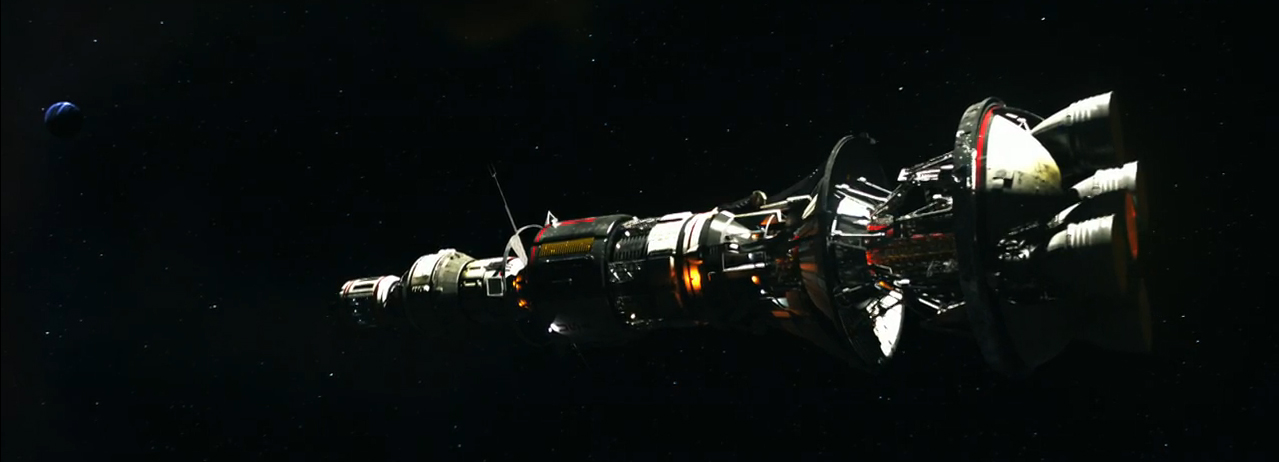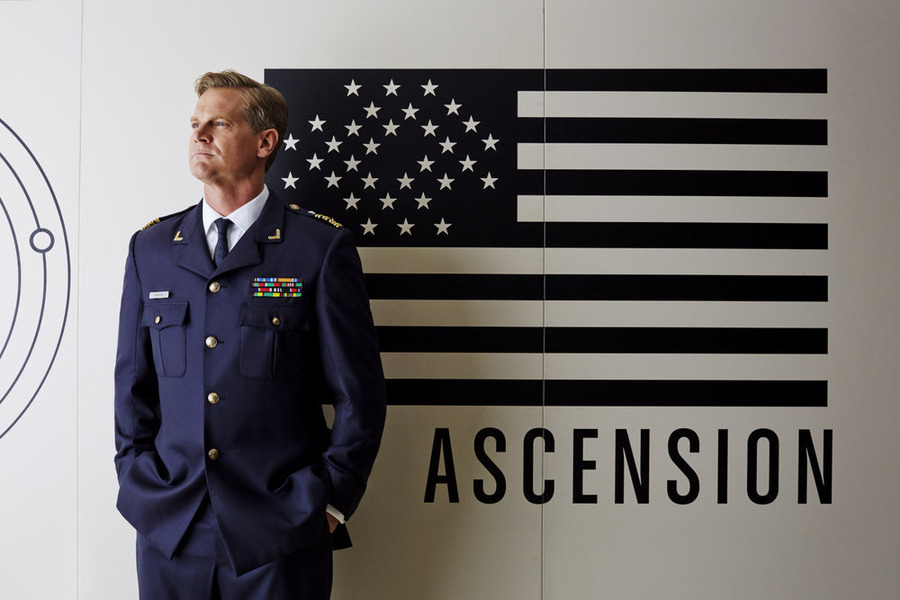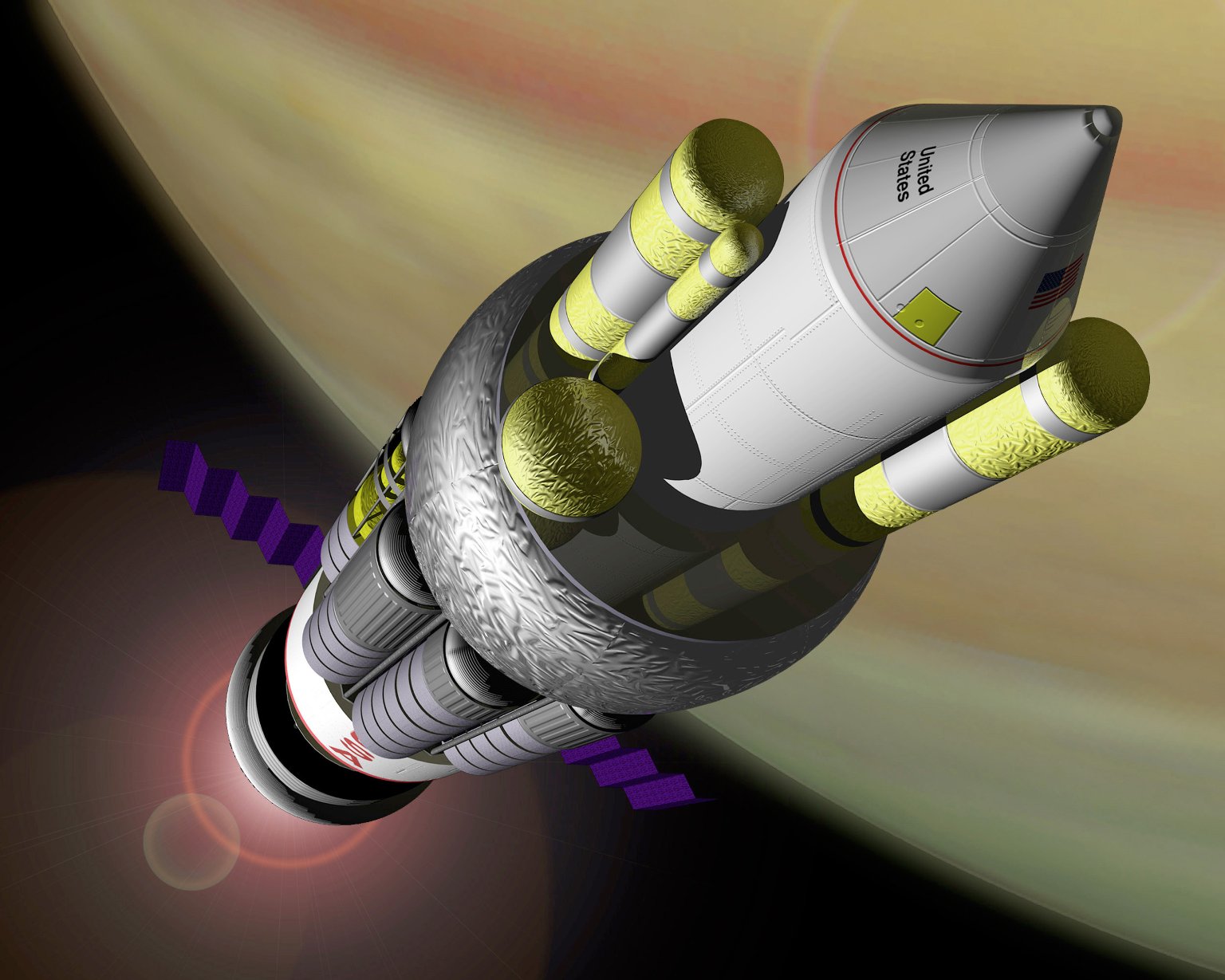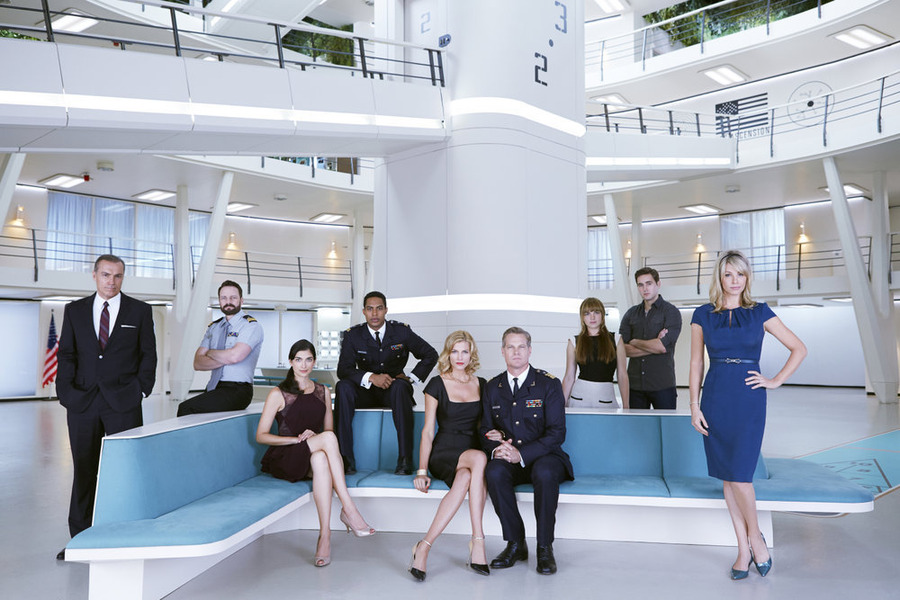SyFy's 'Ascension' Takes 1960s Nuclear Spaceship Idea to the Stars

A spaceship powered by nuclear bombs secretly launched in the 1960s. A colony ship on 100-year journey to spread humanity to the stars. These central themes of the SyFy Channel's epic "Ascension" miniseries this week sound like pure science fiction, U.S. scientists actually worked to build such a spaceship in the 1960s.

In "Ascension," a three-part SyFy miniseries that launches tonight (Dec. 15), 600 people live aboard an Orion-class nuclear spacecraft on a mission to Proxima Centauri. The mission launched in 1963, when the Space Race was in full swing and the Cold War made the threat of global nuclear war an uncomfortable possibility. This leads to Project Ascension, led by a Werner von Braun-esque Abraham Enzmann, who dreamed up a spaceship taller than the Empire State Building that is propelled by nuclear bombs.
There is certainly a lot going on in "Ascension" to grab the average space fan, not the least of which is the fact that the ship Ascension itself is based on Project Orion, a real-life 1960s project by the U.S. government to build a 4,000 ton spaceship propelled through space by nuclear explosions. "Ascension" takes the potential of Project Orion and asks the simple question: What if the U.S. actually did it? [Visions of Interstellar Starship Travel]

Science fiction powered by space facts
The real-life Project Orion began in the late 1950s and ran through the early 1960s until it was shut down after the passage of the Nuclear Test Ban Treaty of 1963, according to a project description on NASA's Glenn Research Center website. But the promise of such a craft was tantalizing, especially given how it worked.
"About five bombs per second are dropped out the back and detonated to propel the craft along. A huge shock plate with shock absorbers make up the base of the craft," reads one NASA description. "Experiments using conventional explosives were conducted to demonstrate the viability of this scheme. Although this vehicle was conceived to take a crew to Mars, it can also be considered for sending smaller probes to the stars." [Superfast Spacecraft Propulsion Concepts (Images)]
In his book "Project Orion: The True Story of the Atomic Spaceship," author George Dyson (son of famed scientist Freeman Dyson who worked on Project Orion) writes that the project, which began in 1957, aimed to launch manned missions to Mars by 1965, with trips to Saturn by 1970. According to Dyson, the project ran through 1965, was overseen by General Atomic and gained NASA's interest in 1963 because of its high specific impulse for space propulsion.

Engineering a space colony
SyFy's "Ascension" embraces its space history, with the crew of its ship garbed in 1960s style, using retro tech and showing a glimpse of what life on a generational colony spaceship would be like. The show begins in the present day, 51 years after the ship's launch, as the mission hits its midpoint.
Get the Space.com Newsletter
Breaking space news, the latest updates on rocket launches, skywatching events and more!
Without giving too much away, the show does make a point of describing the psychological effects of a decades-long spaceflight, particularly on children who have to grow up knowing they will be stuck inside a spaceship — the "glorious tin can" as one character puts it — for most of their lives.
"Battlestar Galactica" reboot alum Tricia Helfer stars as Viondra Denniger, Ascension's Chief Stewardess and wife of Captain William Denniger (Brian Van Holt). First Officer Aaron Gault (Brandon P. Bell) rounds out the top tier cast after being placed in charge of the investigation of the murder of a young woman — the first murder in Ascension ship history. The show was created by showrunner Philip Levens ("Smallville") and executive produced by Jason Blum (film franchises "Paranormal Activity" and "The Purge"), as well as Ivan Fecan, Tim Gamble and Brett Burlock with Sea To Sky Studios.
To say there's a lot of intrigue and scheming going on aboard Ascension is an understatement. But I don't want to spoil the fun for you. To experience the full thrill of the show's twists and turns, you'll just have to tune in.
"Ascension" debuts on the SyFy Channel Monday, Dec. 15, at 9 pm/8 pm Central. Check local listings. Parts 2 and 3 will air on Tuesday and Wednesday (Dec. 16 and 17) at 9 pm/8 pm Central.
Email Tariq Malik at tmalik@space.com or follow him @tariqjmalik and Google+. Follow us @Spacedotcom, Facebook and Google+. Original article on Space.com.
Join our Space Forums to keep talking space on the latest missions, night sky and more! And if you have a news tip, correction or comment, let us know at: community@space.com.

Tariq is the Editor-in-Chief of Space.com and joined the team in 2001, first as an intern and staff writer, and later as an editor. He covers human spaceflight, exploration and space science, as well as skywatching and entertainment. He became Space.com's Managing Editor in 2009 and Editor-in-Chief in 2019. Before joining Space.com, Tariq was a staff reporter for The Los Angeles Times covering education and city beats in La Habra, Fullerton and Huntington Beach. In October 2022, Tariq received the Harry Kolcum Award for excellence in space reporting from the National Space Club Florida Committee. He is also an Eagle Scout (yes, he has the Space Exploration merit badge) and went to Space Camp four times as a kid and a fifth time as an adult. He has journalism degrees from the University of Southern California and New York University. You can find Tariq at Space.com and as the co-host to the This Week In Space podcast with space historian Rod Pyle on the TWiT network. To see his latest project, you can follow Tariq on Twitter @tariqjmalik.









